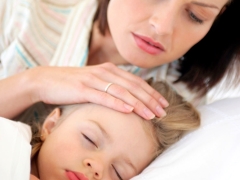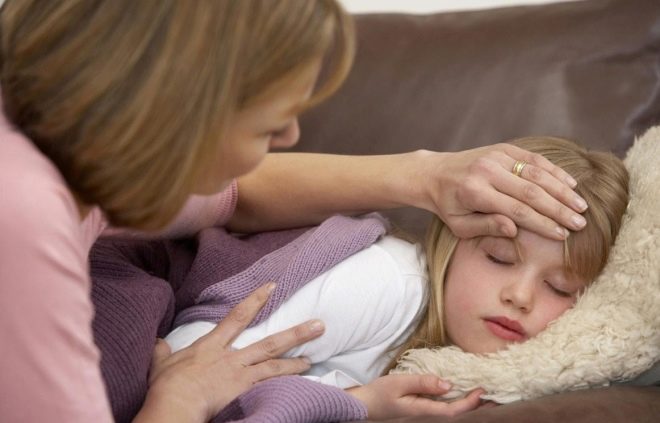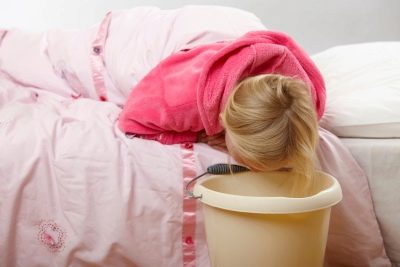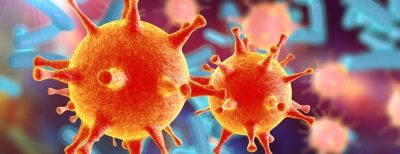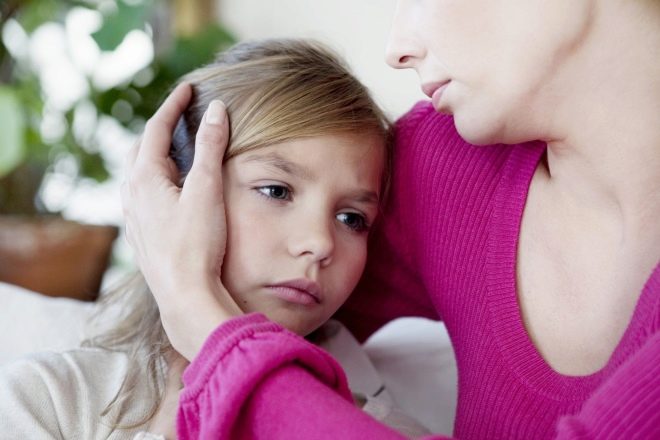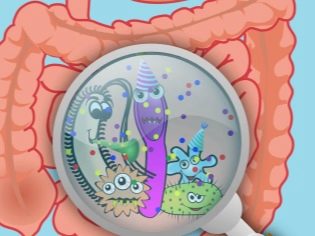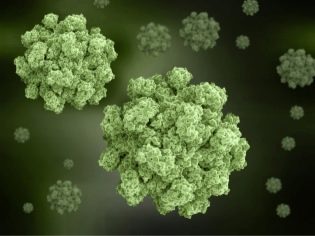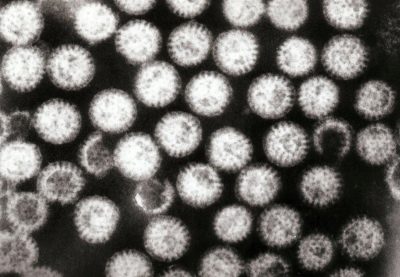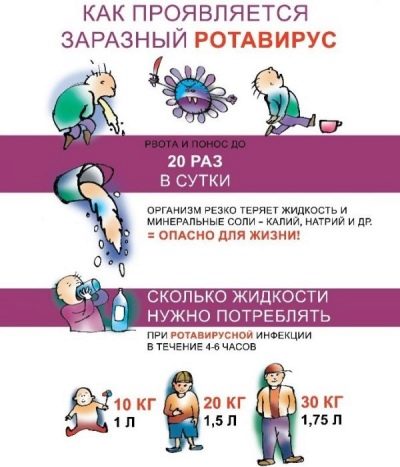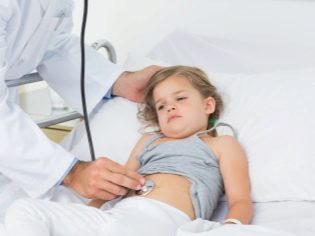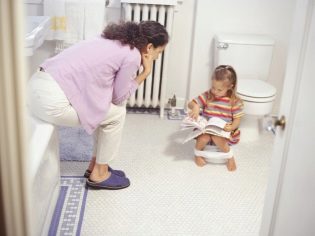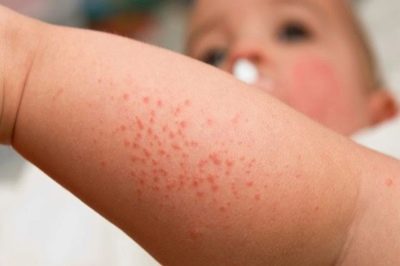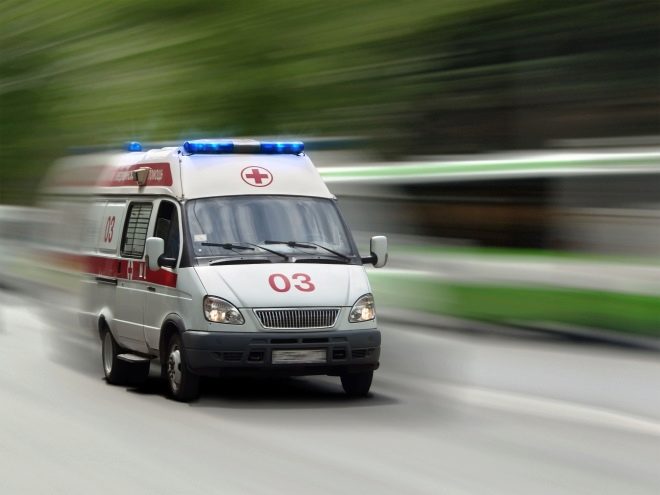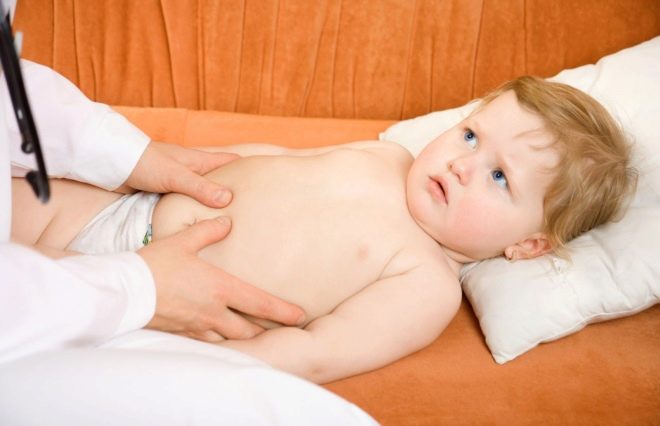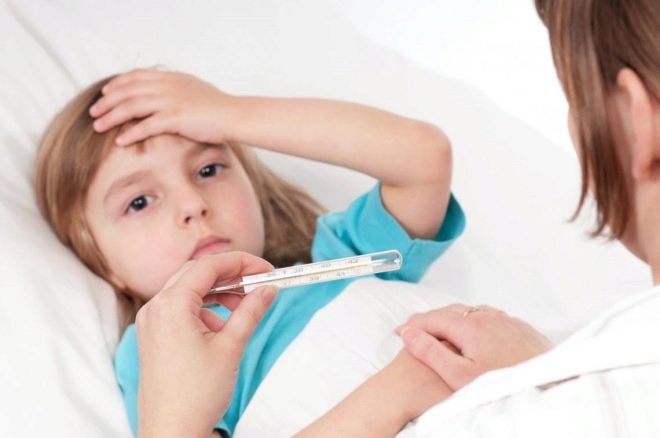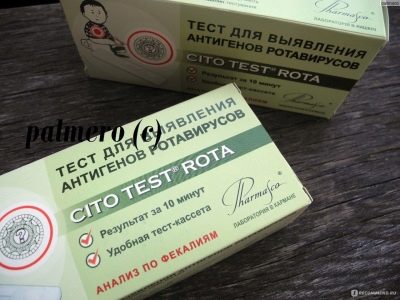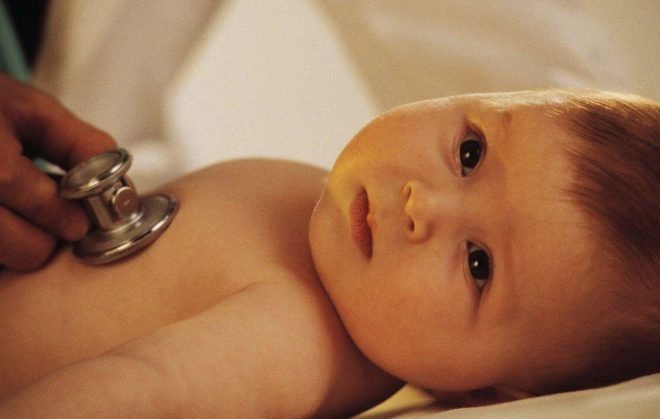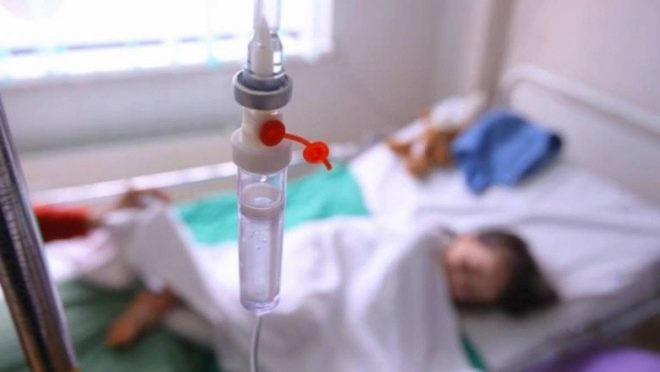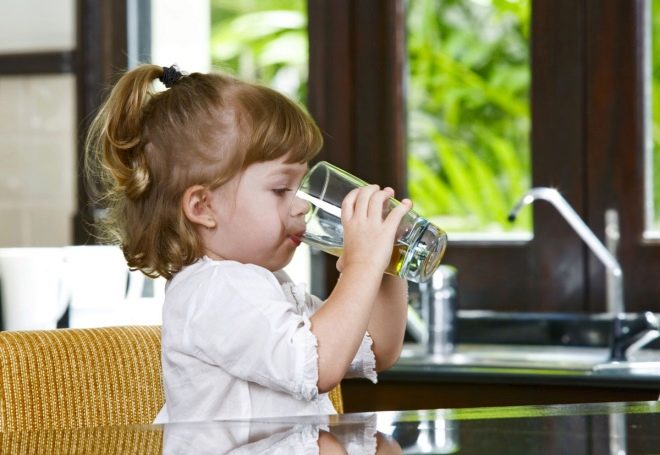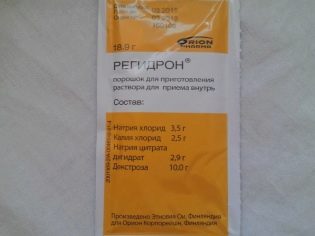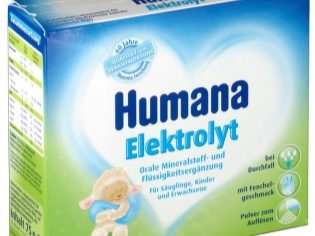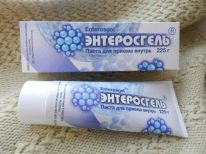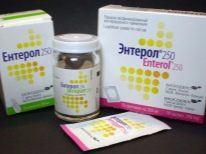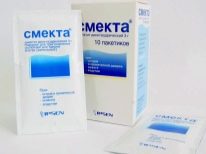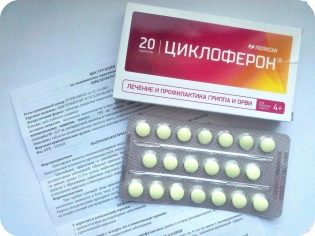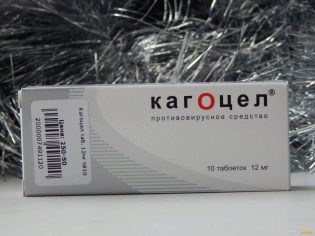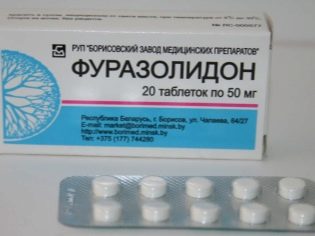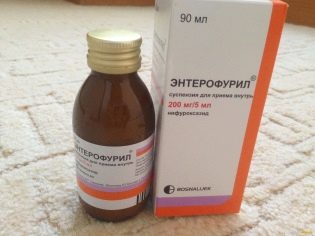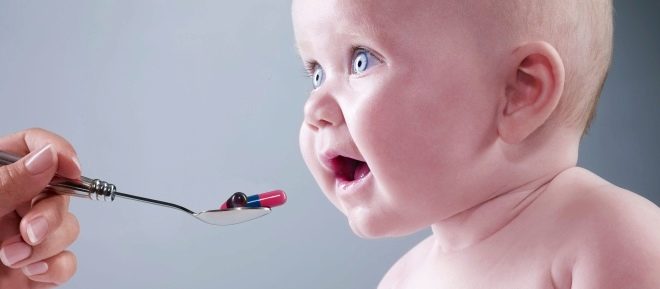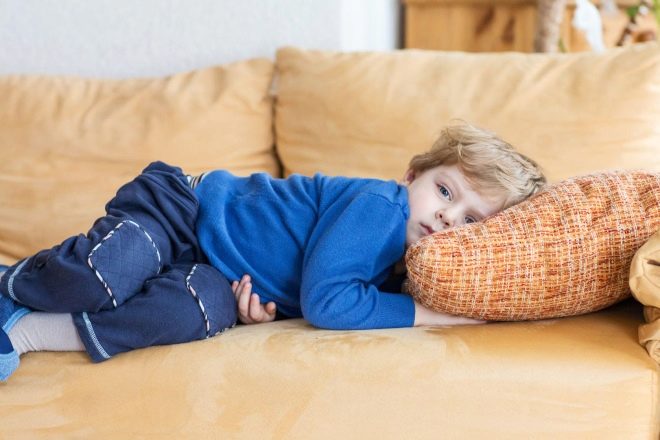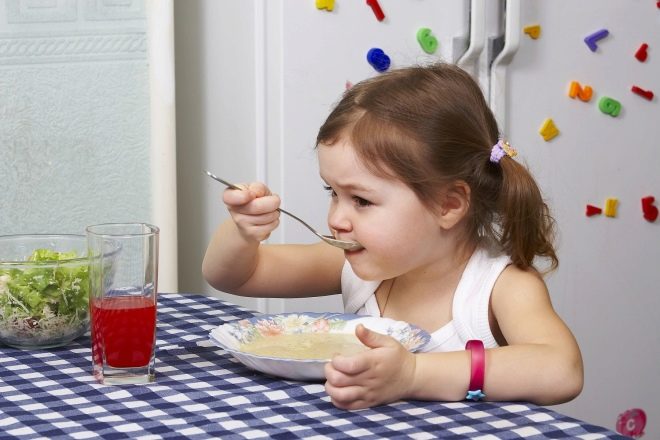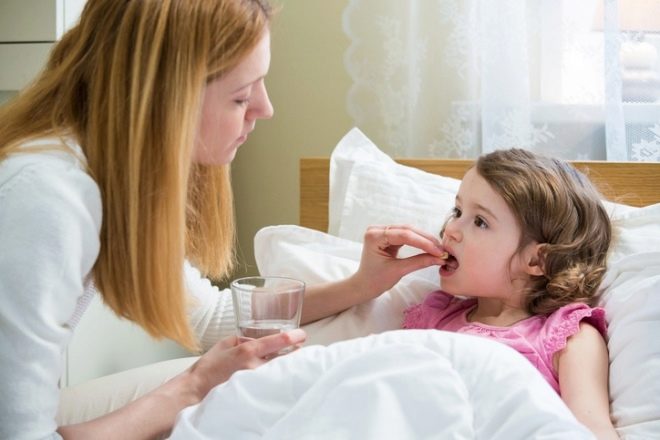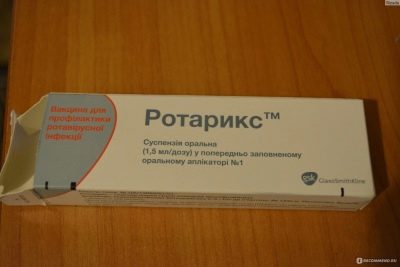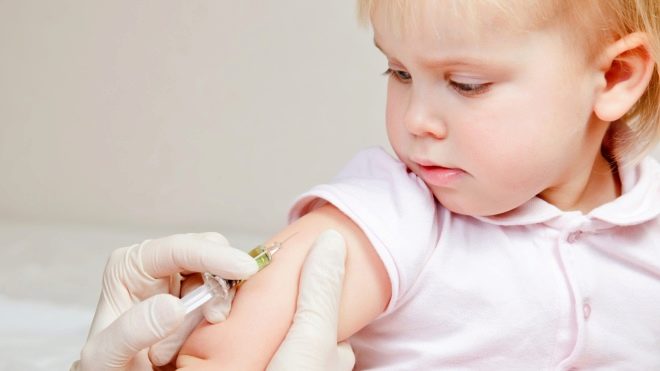Symptoms and treatment of rotavirus infection in children
Rotavirus infection is one of the most common on the planet. It is she who is most often the cause of childhood diarrhea, and not grandmother's pancakes or green apples, as most parents think. There is no such person in the world who would never come across a rotavirus infection. That is why it is important to know exactly "the enemy in the face" and be able to resist him.
What it is?
Rotavirus infection is among the acute intestinal infectious diseases. Often you can find the usual name for this illness in everyday life - “intestinal flu” or “gastric flu”. It should be noted that rotavirus, which causes an unpleasant disease, has nothing to do with the influenza virus. Rotavirus has a different structure, other properties, a different principle of action.
If the influenza virus is capable of reproducing only on the mucous membranes of the respiratory organs, then the rotavirus lives and reproduces well in the small intestine. Therefore, rotavirus infection, although it is among the viral ailments, has nothing to do with influenza and ARVI, since it is not respiratory, it does not affect the respiratory system.
Infectious agents are rotaviruses. They received their name not from the fact that they enter the body through the mouth, although this is an absolute truth, but from its form. Under a microscope, viruses of this family resemble a wheel with a rim and a hub. Therefore, the Latin word "rota", translated as "wheel", was the root of the pathogen name.
There are 9 types of rotavirus. They are denoted by Latin letters from A to I. Ten out of ten children usually have the most common rotavirus type A. Dangerous for humans from the point of view of possible infection and viruses type B and type C. The remaining viruses are found in animals. The rotavirus itself is a strong and enduring fighter. It has a triple durable protein shell, thanks to which the virus is able to survive in the human stomach, withstand the attack of the acidic environment of the gastric juice, in order to finally reach the destination - the walls of the small intestine.
Even the most caring mother can not fully protect her child from rotavirus infection. 97% of children by three years at least once had a disease. The transmission path of the virus is fecal-oral. Anyway, most often. In other words, rotavirus leaves the body, in which it parasitizes, with feces, for a long time can exist in the soil, water, especially in spring or sea, and wait in the wings when it can penetrate through the mouth into the gastrointestinal tract of the new "carrier ".
A child can get infected through water, food, through contact with toys, household items, if touched by a person who has rotavirus, or a person who accidentally brought particles of the virus on his hands. About 3-4% of rotavirus infections are fatal. Here we should reiterate: death does not come from the rotavirus itself, but from those complications that it causes, in particular, from dehydration that occurs during prolonged severe diarrhea.
If an adult who suffers from this ailment spends only a few days in the toilet with diarrhea, then children often have a more severe infection because their immune defenses are weak due to the age and immaturity of the body. The younger the child, the more dangerous it is considered a rotavirus infection. Approximately half of the cases of rotavirus infection require hospitalization for small children. From ailment, children most often die between the ages of 1.5 and 5 years. At the same time, medical statistics indicate that boys are more likely to be hospitalized than girls. It is difficult to say what this is connected with, but the fact remains.
Rotavirus is so contagious that it can cause not only sporadic outbreaks of the disease, but also whole epidemics. About the pandemic is not reported. Most often, children attending kindergarten and school are drawn into the circle of patients. It is in children's groups that the pathogen spreads the fastest. Doctors have noticed a certain seasonality of the disease - rotavirus infection in Russia is most often recorded in the cold season. The rise in incidence begins in November, peaks in January-February and begins to decline by the end of April.
How does the infection occur?
Fecal masses of a person suffering from rotavirus, contain tens of trillions of viral particles. To infect another person, no more than a hundred of such particles are needed, so one disease can infect many thousands of people. This is due to the extremely high infectivity of rotavirus. The virus can enter the body of the “carrier” in different ways - most often through the mouth, but in some cases it was possible to register the infection by an aerogenic route, that is, by close contact with the patient.
Rotavirus infection is among the so-called "dirty hands disease". It is impossible to hide from it. Where there are children who are all trying to "tooth", there will always be cases of infection with it.
Standard sanitization measures for rotavirus do not apply. After the virus enters the child's body, it may take about 1-5 days until the first symptoms appear. This is the average standard time, which is considered to be the incubation period.
The purpose of viruses are the villi of the small intestine. It is their rotaviruses that attack, destroying the cell structure. There the virus is replicated, whole “factories” are created that produce new virus particles. When they accumulate in excess, the villi of the small intestine are unable to absorb nutrients and take part in digestion, symptoms of intestinal upset appear.
Diarrhea causes the death of villi, as well as the fact that viruses produce special proteins that interfere with the normal absorption of water and contribute to the accumulation of lactase.
After the appearance of the first symptoms, the acute period begins, it usually lasts 3-5 days, with a severe course - more than a week.
Then begins the process of restoring the body - it lasts about 5-6 days. A child after a disease caused by rotavirus is contagious for about a week. Even if the crumb feels good, all the symptoms of the disease have receded, with its fecal masses, particles of rotavirus continue to be released, and this is not safe for others.
Most often they are infected with children from six months to 5 years. Newborns rarely suffer from this infection, because in the first months after birth, they are protected by innate maternal immunity - a set of antibodies that are transmitted by a woman to the fetus with blood during pregnancy, as well as antibodies that the baby receives during breastfeeding.
The reasons
Do not think that rotavirus infection threatens children who grow up in inadequate sanitary conditions. Even in families where the closest attention is paid to order and cleanliness, children are ill with it.Washing fruits and vegetables, personal hygiene - all this does not affect the likelihood of getting a viral infection. This is due to the high pathogenicity of the virus, its widest distribution.
Most often, the virus enters the drinking water, and not only in the spring, but also in the water supply, the existing purification systems can not guarantee the complete safety of water. Often the baby gets rotavirus with milk and dairy products.
The most common cause of infection is communication with other children, one or more of which may be carriers of the infection.
Symptoms and signs
Rotavirus infection manifests itself sharply, sharply, its very beginning practically does not cause doubts about what is happening. The first signs are intestinal disturbances. Most often, rotavirus in a child’s body manifests itself as diarrhea. A child simultaneously with liquid stool develops repeated vomiting, a high temperature rises (38-39 degrees).
The child complains of weakness, malaise, that the stomach hurts. Urine becomes turbid due to intoxication. Flatulence increases, your baby's appetite disappears, the skin becomes pale, and an unpleasant smell may appear from the mouth.
The consistency and color of the chair can be understood that we are talking about a rotavirus infection, because with her fecal masses have their own characteristics. At the very beginning of the feces has a frothy consistency and yellow-green color. It can contain impurities of mucus, feces have a sharp and unpleasant smell. On the second or third day after the onset of the acute phase of the disease, the feces become clay-like, gray-yellow. Bright feces have a heterogeneous consistency.
Urine on day 2 becomes dark, it can be observed visually flocculent impurities, the fluid secreted by the kidneys begins to smell unpleasant. A day after the onset of the disease, most children begin to have a sore throat, a cough, a small runny nose. It is for this, apparently, that the ailment is called “intestinal flu.”
By the way, the rotavirus always “walks” somewhere near the flu virus. Most often, outbreaks of intestinal infectious disease occur either on the eve of an epidemic of influenza and ARVI or in its midst.
The course of the disease may be different, and besides, each child, due to the state of health, may have individual reactions, for example, a small rash appears if the child is prone to allergies or atopy.
Alarming symptoms of rotavirus infection are signs of dehydration - dehydration. One can guess that it has begun, by a characteristic change in the facial features - it looks drawn, the lines are pointed, blue circles appear under the eyes, eyes look somewhat “sunken”. The amount of urine decreases, the child can never pee for 5-6 hours. The baby has a dry tongue, lips are dry, he is thirsty.
It is dehydration with rotavirus that leads to death, and therefore parents should by all means try to prevent such an outcome, and if it is impossible to avoid dehydration, immediately call an Ambulance.
The most classic picture of infection is rotavirus gastroenteritis and enteritis. Signs of secondary lactase deficiency may occur. After recovery, these children should be carefully entered into the menu, milk and dairy products, since recurrence is not excluded.
According to the severity of symptoms, the infection is divided into mild, moderate and severe:
- mild form is less painful, with an average frequency of loose stools can reach 10 times per day;
- in severe form, diarrhea causes the child to empty the intestines about 15–20 times a day, while vomiting is frequent, copious, even from drinking water. Movement decreases, a one-year-old child can quickly lose body weight.
Effects
In most children, rotavirus infection is successfully treated at home and has no effect. However, a doctor’s consultation is obligatory because it is quite difficult for parents to understand what form the disease has and how dangerous it can be.
Improper treatment, failure to comply with clinical guidelines, refusal of hospitalization in the hospital, if the form of the disease is severe - all this can cause serious complications.
Rotavirus infection is dangerous because it can cause acute heart failure, renal failure. Immunity weakened by the virus creates excellent prerequisites for attaching a secondary, mainly bacterial infection. If the child had problems with the digestive organs, rotavirus infection can exacerbate chronic diseases.
Diagnosis - how to distinguish from poisoning?
The usual food poisoning, with which rotavirus can be confused, looks like this virus disease only at first glance. If you look closely, these two states are easily distinguished from each other.
Food poisoning is a predominantly bacterial process. Often poisoning occurs with vomiting, but without diarrhea and temperature. Also, it is often manifested by diarrhea without temperature or with raising it to subfebrile values (about 37.0 degrees).
High fever is the main hallmark of rotavirus infection. In addition, in case of poisoning, the feces will resemble pulp in consistency, and in case of viral disease it will be watery. Be sure to report these symptoms to your doctor so that it is easier for him to make a correct diagnosis. It should be noted that the doctor can only call into question the diagnosis of “rotavirus infection”.
Accuracy of the presence of rotavirus can only be based on laboratory tests, which primarily include the study of fecal masses for the presence of particles in them. A blood test is also conducted to detect specific antibodies to rotaviruses in it, as well as other laboratory methods.
At home, parents can do a rapid test for rotavirus infection. Such tests are on sale. As the test material used fecal masses of the child.
Treatment
The desire of parents to treat the child at home under vigilant own control is easy to understand. However, with regard to rotavirus infection, mothers and fathers should be fully aware of what is happening. Only mild forms of the disease can be cured at home, with moderately severe and severe forms of the disease, hospitalization and hospital treatment is indicated.
Treatment must be timely, it means that the earlier the mother and father of the sick child calls the doctor, the more favorable the predictions will be and the less likely the complications. You should not wait for several days to make sure that diarrhea and vomiting - this is a long time. On the first day you should seek medical help and begin the prescribed treatment.
Since the disease is of viral origin, it is almost impossible to fight the rotavirus itself, like most other viruses known to mankind. Only the baby’s own immunity can cope with them, but it takes several days to become active. therefore The essence of therapy is reduced to symptomatic treatment, which should prevent the occurrence of dehydration, seizures, changes in the cardiovascular and excretory systems. Diarrhea with a diet, special nutrition takes two to three days, but the recovery period will require more careful attention.
Diarrhea, as already mentioned, can cause dehydration, and it is to prevent it should be directed all efforts of parents from the very first hours of the onset of the acute stage of the disease.
It is intensive rehydration therapy aimed at replenishing the water-salt balance in the body, is the basis of treatment.
In mild form, it is carried out at home, with medium and severe forms, the lack of fluid in the body is replenished by intravenous infusion in a hospital.
Also You should not refuse hospitalization even if the child has severe vomiting and cannot drink at all and “hold” the liquid - he immediately becomes sick. This baby is also better as soon as possible to begin to inject intravenous saline.
At the first symptoms of rotavirus infection, parents should provide the child with rest, measured bed rest. Reduced physical activity will help to survive the difficult early days, accompanied by high fever, without increasing the risk of complications.
From the first minutes should ensure adequate drinking regime. Under the drinking regime means that the baby must take a large amount of fluid. The more intense the diarrhea and gag reflex, the more it needs to be given fluids.
To prevent dehydration, carbonated drinks, juices, and milk are not suitable. It should be given only drinking clean water, sour homemade homemade juice, unsweetened compote of dried fruit.
An important condition is the temperature of the liquid. Drink should not be hot or cold. Only room temperature drinks can be absorbed faster in the intestines and absorbed by the body. If the child is small and he refuses to drink, parents can use a syringe without a needle to inject the liquid in a drip way. In this case, it is necessary to direct the syringe at an acute angle along the inner surface of the cheek, so the crumb will not choke and will not be able to spit out everything that the parents have poured back.
If, despite persuasions and tricks, it is not possible to get the child drunk, parents should call an Ambulance, because dehydration is easier to prevent than to cure. The remaining symptoms of rotavirus infection are relieved as they are received. Temperature - antipyretic agents, runny nose - vasoconstrictor drops. What drugs can be prescribed to a child with rotavirus infection, we describe below.
Preparations
A child who is struck by an acute intestinal infection will definitely need medicines that will help relieve unpleasant symptoms and shorten the duration of the disease. These primarily include means for oral rehydration (to fill the water-salt balance). Such funds should always be on hand, as part of a home first aid kit. It "Regidron"," Humana Electrolyte "and others. They are packaged in convenient bags that can be easily diluted in warm water and give the child a drink.
Since rotavirus infection occurs suddenly, the first-aid kit may not have the right drug. Nothing wrong with that, because the salt solution, which is best to feed the child with vomiting and strong diarrhea, can be prepared independently from simple ingredients that are available in any kitchen. By the way, this recipe was approved by WHO, and it can be used in practice without a doubt. You will need a liter of warm water, two spoons of sugar, a spoon of salt and a spoon of soda. Everything is well mixed and given to the child to drink as often as possible.
In the second place in importance for recovery are sorbent preparations. These include "Activated charcoal", "Enterosgel», «Enterol», «Smecta". They will help to quickly degrade products from the body and reduce intoxication. The use of antiviral drugs seems logical, because the disease is viral. However, in practice, everything does not look so bright.
Standards for providing medical care for rotavirus infection do not imply the administration of antiviral drugs, since none of them show any tolerable efficacy against rotavirus.
Of course, a doctor called to the house will most likely recommend “Anaferon”, “Cycloferon” or “Kagocel". It's just that the pediatrician knows perfectly well that the viral infection will pass by itself, but alarmed parents definitely need to “cure something” the child, because if the doctor confines to recommendations to drink more fluids, mom and dad may think that he simply does not want or does not know how to treat their child. . Therefore, drugs are prescribed, many of which are generally homeopathic (“Anaferon,” for example). It means that no harm to the children's body such drugs will not cause. But benefit, alas, also will not bring.
Antivirals are expensive, and therefore it is worth to measure their family budget. The conscience of parents can be completely calm - there is no need for such drugs. Their effectiveness is not proven. Quite often, parents repeat monstrous mistakes, trying to prescribe medication drugs to the child on their own.
Moms and dads, who know well that antidiarrheal drugs help with diarrhea, might think that the dose "Enterofuril" or "Furazolidone"Will help the baby recover soon." These drugs can only harm when rotavirus infection. Fighting diarrhea as such is not worth it. It is necessary for the virus particles to leave the body. He is a kind of defense mechanism.
Stopping diarrhea forcibly with rotavirus means stopping viral particles inside the intestine, thereby prolonging the period of illness. Some parents feed the child so diligently with antidiarrheal drugs that after such treatment the child suffers from constipation for a long time.
A gross mistake is the appointment of a child antibiotics during rotavirus infection. Antibacterial agents do not have any effect on the virus, do not contribute to relieving symptoms, do not alleviate the condition of the child, and additionally aggressively affect the intestinal microflora. Thus, the baby also acquires dysbacteriosis.
Sometimes parents may encounter a doctor who advises taking antibiotics for rotavirus "just in case" in order to "avoid complications." It is better not to have any business with such doctors who seek not to provide help, and first of all to insure themselves. Antibiotics for rotavirus infection are prohibited! This is a rule that has no exceptions and is not negotiable.
The antipyretic drugs can be used, but “Aspirin” and any drugs based on acetylsalicylic acid should be avoided; it can cause life-threatening Ray's syndrome in a child.
It is better to prefer drugs based on paracetamol. They can be used in candles, rectally, in tablets and in the form of syrups for small children.
At the recovery stage, vitamins and probiotics are often prescribed, which allow the intestines to be replenished with normal beneficial microflora.
How to give the child first aid?
If vomiting and diarrhea are intense, in addition to drinking heavily, parents should be aware of precautions when providing first aid. As already mentioned, the child should be put to bed. If the son or daughter is small, you should put the child on its side so that during a sudden attack of vomiting the baby does not choke on vomit. You can not feed the child. The exceptions are babies who are breastfed. Breast milk is not prohibited.
Do not rush to dispose of the diaper with stool samples or the contents of the pot down the drain, as it will be easier for the visiting doctor to diagnose if he sees and asses the nature, color and consistency of the stool.
Nutrition
Since the manifestation of the symptoms of infection is better to refrain from eating altogether. If the child asks for it, you can give him a low-fat mashed potatoes, a porridge-mash. But only in very small quantities. Therapeutic diet implies a complete rejection of spicy foods, fatty foods, sweets, juices and dairy products. Citrus fruits (orange, lemon, tangerines) and carbonated drinks are prohibited.
As soon as the vomiting subsides, you can gradually and carefully introduce foods into the baby's diet. It is best to start with low-fat vegetable broth and crackers, cooked independently of white bread. Then add porridge (without milk and butter), banana, vegetable puree. You can eat soups, steam cutlets made of lean meat or fish.
Recommendations to limit the child in food does not mean that parents should begin to apply fasting. But on the first day it is really better to abstain from food. When the baby feels better, he will certainly want to eat himself, and here the main thing is not to start feeding him immediately according to his usual diet, otherwise relapse cannot be avoided.
Prevention
Preventive measures to prevent rotavirus infection are taken at the state level. Waters are chlorinated, in institutions they adhere to a certain sanitary regime. Washing hands and attentiveness to the purity of products, especially fruits and vegetables, as well as my mother's advice not to drag toys and fingers on the street in your mouth are all measures of non-specific prophylaxis.
If your child is sick, you should not contribute to the further spread of rotavirus. At high temperatures, the baby should be in bed. When the fever subsides, the patient can walk, the child can be bathed, but you should not visit the playgrounds, the places where other children go for a walk and play to prevent their infection with aggressive and cunning rotavirus.
Vaccination is the only specific measure that helps protect the child. More on this vaccine, we will discuss below.
Rotavirus vaccine
Vaccination against rotavirus infection exists, but most parents do not even realize it. The fact is that in Russia it is not yet included in the national calendar of preventive vaccinations. This vaccination is available in paid clinics and private medical centers. It is recommended to do it when planning a trip to the sea, especially to places where there is unfavorable epidemiological conditions for rotavirus infection.
Recently, the Ministry of Health thought about expanding the schedule of vaccinations, which are mandatory. Soon, rotavirus vaccination is planned to be introduced as mandatory for all children. Such a vaccination has already been approved as a universal child in many countries of the world. According to experts, the risk of getting sick from a vaccinated child is reduced by about 80%, and the number of deaths due to complications of a past rotavirus infection is reduced by more than 40%.
It should be understood that vaccination against rotavirus infection does not so much reduce the incidence of disease as it provides for easier disease progression. By the way, after suffering a disease to rotavirus, its own immunity is produced, but it is weak, it cannot be considered lifelong: after a few months it weakens, but does not completely disappear, and therefore each subsequent infection with rotavirus infection will be easier than the previous one.
There are two types of vaccine - Rotarix and RotaTek. Both are drops, that is, the child does not have to endure a sore corner, the drug in liquid form is dropped into his mouth. The vaccine contains live, real rotavirus, which in the laboratory was artificially weakened. It is not capable of causing diseases, but it is capable of activating immune processes — specific antibodies to a certain type of rotavirus will begin to be produced.
Do not be afraid of allergies to this vaccine. An inadequate response of the body to the components of vaccines is extremely rare, such cases are rather isolated. Experts believe that the benefits of vaccination will be especially great for a certain age group of children.It is recommended to vaccinate children from one and a half months to six months. Older children in vaccination does not make much sense, since they are more likely to have rotavirus.
No special preparation for vaccination is required. The only prerequisite - the absence at the time of vaccination diseases, malaise, feeling unwell. So babies terms of vaccination can be postponed.
Experts emphasize that reducing the incidence of rotavirus infection will help careful attention to the planning of children's activities and timely vaccination. So, Rospotrebnadzor regularly monitors regions where outbreaks of the disease are observed and warn everyone who is going to these regions for business or leisure.
In recent years, the largest number of outbreaks registered in the resort areas of Bulgaria, Crimea, Sochi. Rest on the sea can be spoiled by unpleasant symptoms of a lesion with rotavirus, which is transmitted with sea water at the height of the tourist season.
It is quite difficult to cure a child while on vacation with him. Therefore, experts recommend about 2-3 weeks before departure to vaccinate a child of any age, especially babies up to a year.
What rotavirus and what are his symptoms - the doctor will answer all the questions Komarovsky in the next video.
